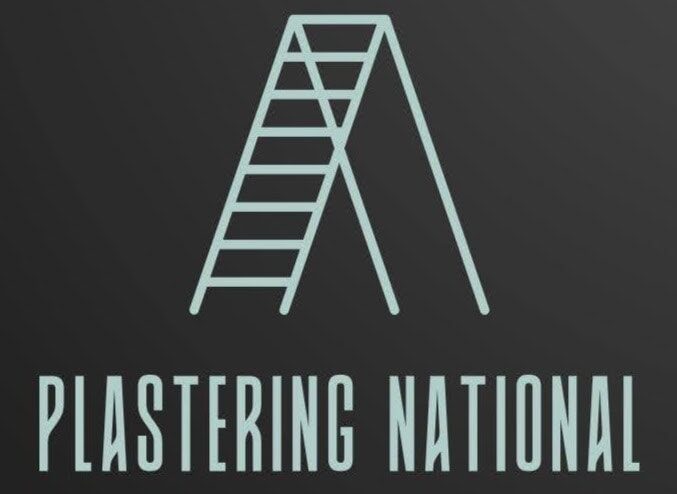Plastering plays a vital role in both the aesthetic and structural integrity of buildings, offering benefits like smooth surfaces, fire resistance, and moisture control. However, plaster can face various challenges over time, such as cracking, moisture damage, and detachment, often leading to more serious structural issues if not addressed.
This guide provides a comprehensive approach to plastering inspections and maintenance, emphasising the importance of regular checks, preventative care, and timely repairs.
Let’s Get Straight To The Point
Plastering is essential for both aesthetic appeal and structural integrity, but it can face issues like cracking, moisture damage, and detachment over time. Regular inspections, including post-application checks and routine maintenance, are crucial to catch minor problems before they become major structural concerns.
Common issues like cracks, flaking, and mould require timely repairs. Preventative measures, such as controlling moisture and ensuring proper ventilation, help maintain plaster durability.
Larger issues may need professional intervention. By following a comprehensive inspection and maintenance protocol, property owners can preserve the quality and longevity of plastered surfaces.
Why Plastering Inspections and Maintenance Matter

Plaster plays a critical dual role in construction and renovation. Not only does it provide a smooth, appealing surface for walls and ceilings, but it also offers structural support, fire resistance, and moisture control. Its importance is often underestimated until visible damage appears—by which point underlying problems may already be significant.
Hairline cracks, discolouration, or softening might seem cosmetic at first glance. However, such minor issues can quickly develop into structural concerns if left unattended. Water ingress behind plastered surfaces can lead to bulging, flaking, and even detachment from the underlying substrate, while poor application or environmental stresses may cause progressive deterioration.
Regular inspections and ongoing maintenance are essential to prevent these scenarios. A proactive approach ensures longer-lasting finishes, preserves property value, and significantly reduces the likelihood of expensive repairs.
Key Stages of Plastering Inspections: What to Check and When
Plaster inspections should follow a clear timeline. Each stage targets specific problems, depending on the age and condition of the surface.
Immediate Post-Application Inspection (Within 24–48 Hours)
Once the plaster has been applied, an early inspection ensures that the job has been executed to standard. This step allows issues to be addressed before the plaster fully cures.
The surface should be carefully observed for hairline cracks, especially around joints, corners, and transitions between materials. These cracks are typically caused by either drying too quickly or insufficient reinforcement. Light tapping can reveal hollow spots beneath the surface, which usually indicates inadequate bonding between the plaster and the substrate.
Inspectors should also check for colour consistency. Discoloured patches may indicate uneven curing or incorrect mix ratios. Lighting from an angle can highlight bumps, depressions, or trowel marks that would otherwise go unnoticed.
Routine Maintenance Inspections (Quarterly Or Biannually)
Plaster surfaces require ongoing evaluation, particularly in buildings exposed to fluctuating temperatures, high humidity, or structural movement. Routine inspections help catch problems early before they evolve into major defects.
One of the first signs of wear is the appearance of new cracks, which can result from building movement or poor environmental control. Additionally, surface integrity can be checked using a moisture meter, which identifies damp areas often hidden behind paint or wallpaper.
Plaster in wet zones such as kitchens, bathrooms, and laundry areas should be closely examined. Bubbling, mould, or soft spots often signal trapped moisture or ventilation issues. A simple adhesion test—lightly scratching the wall—can indicate if the plaster has begun to degrade or separate from its base.
Annual Structural And Substrate Inspection
A deeper inspection should be performed annually. Unlike routine surface checks, this evaluation considers the condition of what lies beneath the plaster. In older homes, the substrate may include traditional lath—thin wooden slats or metal mesh used to hold plaster in place. Any deterioration here could affect the entire plaster system.
Sagging or bulging areas often point to detachment from the lath or decay in the wall’s framing. Structural shifting or water damage behind the surface can lead to these symptoms. Identifying and resolving these deeper issues early is key to maintaining the wall’s strength and stability.
Common Plastering Issues Identified During Inspections
Regular inspections often reveal a range of recurring issues, many of which stem from predictable causes. Understanding these problems helps guide effective maintenance.
Cracking remains the most frequent defect. These may appear as thin hairlines or more pronounced splits. While small cracks are often the result of natural movement or curing processes, wider or spreading cracks can be symptoms of more serious structural stress or moisture intrusion.
Flaking and powdering occur when the surface has not bonded correctly to the underlying substrate. This may result from poor preparation, excessive use of retarding agents, or application over a dirty or unstable surface. Over time, the plaster becomes soft and breaks away under light pressure.
Hollow areas typically form when the plaster hasn’t properly adhered to the base. These sections are often revealed by tapping the wall and listening for empty-sounding spots. Left unaddressed, these can progress to large detachments.
Bulging or sagging sections suggest a complete failure in bonding, often caused by moisture saturation or failing lath. If the plaster begins pulling away from the wall or ceiling, full replacement may be necessary in that area.
Mould growth and staining usually stem from persistent dampness. This is common in rooms with poor ventilation or water leaks. Yellow or brown discolouration often signals active water damage, while dark spots may indicate fungal growth.
Uneven colouring across a plastered surface may also suggest inconsistencies in the plaster mix or irregular drying conditions. This issue is often aesthetic, but it may reflect deeper problems with workmanship.
Plaster Maintenance Protocols for Long-Term Durability
Maintaining plaster properly requires a balanced combination of environmental control, regular cleaning, and minor preventative action. A consistent approach reduces the frequency of repairs and ensures the longevity of finishes.
Preventative Maintenance Routine
Inspecting walls and ceilings after periods of heavy rainfall or extreme heat helps to identify vulnerabilities caused by changing environmental conditions. Seasonal checks are particularly effective at spotting early signs of damage caused by thermal movement or moisture ingress.
In areas prone to high humidity, such as bathrooms or enclosed laundry rooms, installing dehumidifiers or improving airflow with ventilation systems significantly reduces moisture-related damage. Similarly, sealing external joints and small cracks ensures water cannot seep into internal plaster layers.
Cleaning And Protective Care
Cleaning should be done gently. Dry cloths or slightly damp microfibre towels are recommended, while abrasive sponges or strong cleaning agents can cause surface damage. Regular dusting prevents grime from embedding into the finish, preserving the surface’s integrity.
In high-traffic areas, occasional repainting may be necessary. Use breathable paint that allows moisture to escape, reducing the risk of mould and cracking beneath the surface. Where wall decorations or shelves are used, be sure to secure them properly, avoiding direct stress on the plaster, which can lead to cracking or chipping.
Moisture Control Measures
Water is one of the most damaging elements of plaster. Maintaining roofing systems, including gutters and flashing, is crucial to preventing leaks. Plumbing issues should be resolved promptly to avoid water accumulating behind walls or ceilings.
In wet rooms, ensure adequate ventilation is present. Exhaust fans, wall vents, or windows help to maintain balance in humidity levels, preventing condensation and the problems it can bring.
Repair Protocols for Damaged Plaster
Timely repair is essential once defects are detected. The appropriate method depends on the size and nature of the problem.
Small-Scale Repairs (Cracks, Chips)
Small imperfections can be addressed easily with minimal tools. The damaged section should be cleaned and slightly dampened to help the new plaster adhere. A pre-mixed compound or fresh plaster is applied with a putty knife and smoothed to match the surrounding surface.
After drying, the area should be lightly sanded and primed before painting. These minor fixes help restore visual appeal and prevent further deterioration but should always be monitored in future inspections to ensure the issue hasn’t returned.
Medium To Large-Scale Repairs (Bulging, Delamination, Water Damage)
Larger repairs are more complex. All compromised plaster must be removed, sometimes requiring cutting back to a solid, stable edge. The exposed substrate should be carefully inspected. If the lath or framework is compromised, it must be replaced or reinforced before reapplying plaster.
Multiple coats may be necessary to rebuild the profile. Each layer must be allowed to dry properly, and mix ratios must be accurate to ensure durability. Once the surface is flush and dry, sanding and refinishing complete the repair.
Quality Assurance and Documentation Protocols
For both new plastering projects and maintenance works, quality assurance plays a key role in avoiding long-term issues.
Before any plastering begins, the project blueprint and specifications must be reviewed. This ensures proper planning around dimensions, substrates, materials, and any unique design features.
Material verification is essential. Batches should be checked for expiry dates and storage conditions, and mix ratios should be confirmed according to project requirements. Environmental factors such as temperature and humidity must also be accounted for during application.
Each inspection should be documented. This includes written records of observations, photographic evidence of any damage, and details of corrective actions taken. In commercial or regulated settings, these records form part of a broader compliance framework and should be maintained carefully.
When to Call in the Experts

While small repairs may be manageable in-house, larger issues require professional intervention. Licensed plasterers bring expertise in diagnosing complex problems and applying advanced solutions that meet national construction standards.
Persistent cracking, widespread detachment, or recurring moisture problems are all signs that more extensive remediation is needed. Professional plasterers not only correct surface-level defects but also identify and resolve the underlying causes.
By engaging experienced tradespeople, property owners benefit from warranties, insured work, and compliance with Australian Standards (such as AS 2589 for plasterboard systems). This protects both the building’s structure and its occupants, ensuring long-term safety and aesthetic quality.
Plastering, when done correctly, is a long-lasting and visually appealing finish that supports the structure of a building. However, it is not immune to wear, environmental damage, or poor workmanship.

